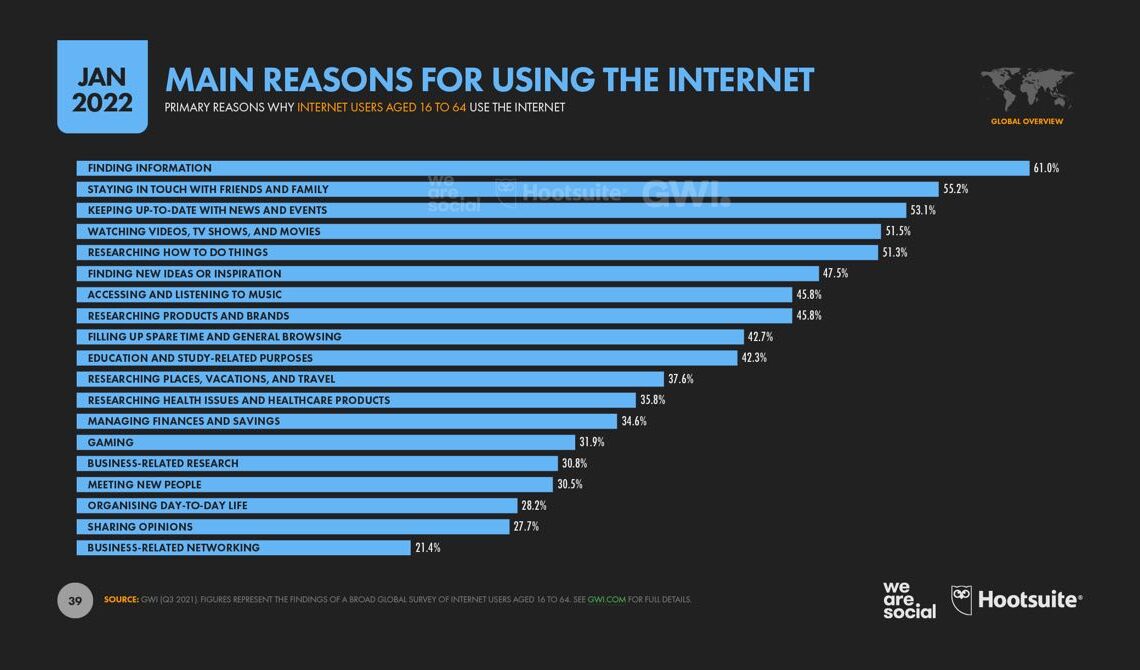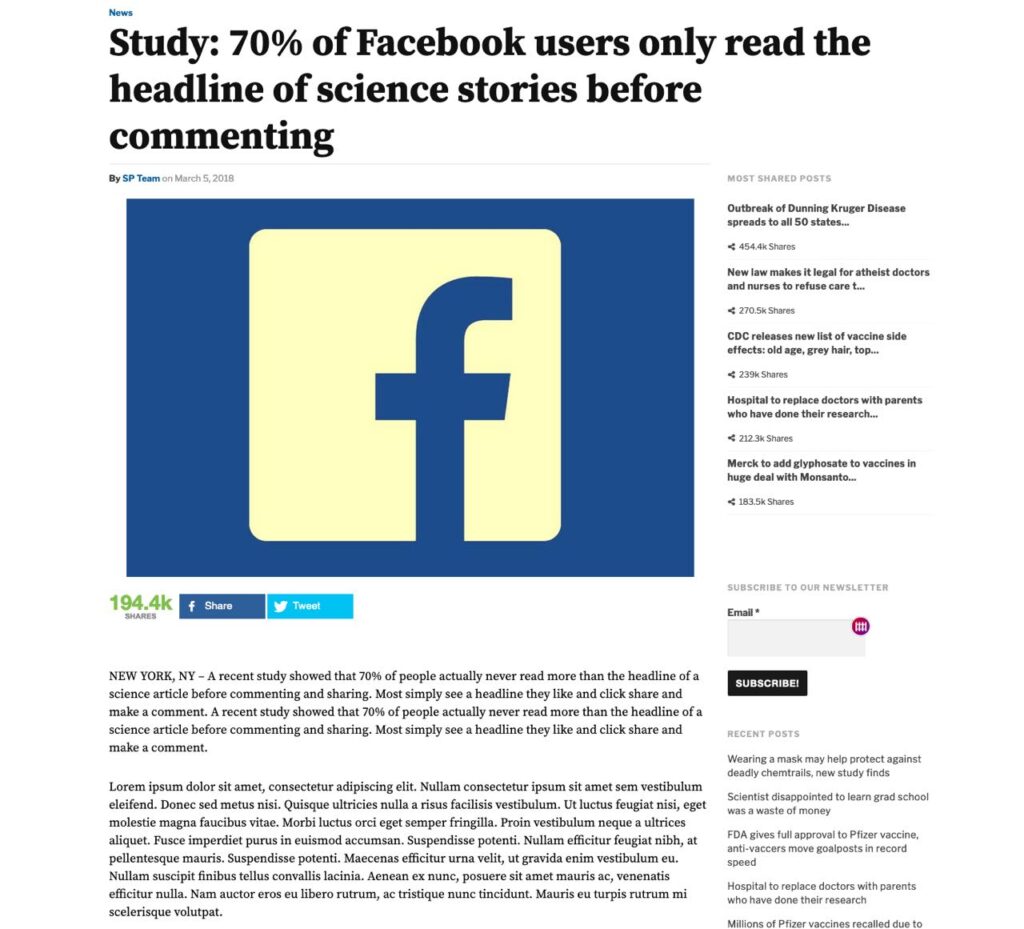
Above: An excerpt from a DataReportal chart comparing stated reasons for using the internet.
BitDepth#1340 for February 07, 2022
For millions, social media is an engrossing lark, a way to spend entirely too much time catching up with friends, ogling the lifestyles of the apparently wealthy and anonymously destroying reputations.
For a growing number of users, it’s also a way to engage in marketing, both obvious and stealthy, of goods and services.
With a range of platforms available and limited time to choose, knowing where to place emphasis is important.
In one compelling statistic, the recently released Digital 2022: Global Overview Report, a collaboration between We are Social, Kepios and Hootsuite, notes that individuals are engaging with between four (Japan) and nine (Brazil) social media platforms regularly.
Over the last ten years, the count of internet users grew from 2.18 billion at the start of 2012 to 4.95 billion at the start of 2022. In 2021, those numbers grew by four per cent.
Despite that growth, one billion people are offline in Southern Asia and 840 million are unconnected in Africa.
While internet use has soared in China, 400 million Chinese citizens are unconnected. Many of those offline are unaware of the existence of the mobile internet.
Market research firm GWI notes that at least 98.5 per cent of users of a top social media platform will also be found on at least one other platform.
The global favorites among social platforms are now WhatsApp, Instagram and Facebook in that order.
Claiming fourth and fifth place are WeChat, China’s popular alternative to WhatsApp and Douyin, the original version of TikTok.

WeChat is used by 99 per cent of Chinese internet users, offering a sense of the size of that online audience.
Tik Tok may be sixth on the list of top social media apps, but it is rising fast. Between the second and third quarters of 2021, use of the app rose by 71 per cent.
Also growing steadily is Instagram, which increased its user base by 60 per cent over the last two years.
Instagram advertising reach has increased by 20 per cent since the last Global Overview report and the app is also sticky with users who spent up to an hour longer using it in 2021.
Instagram’s most robust core audience is among users 18-34 years old for both advertising in its feed and in reels, with a strong 72.6 per cent spike in reach for placements in Instagram stories.
Internet access using mobile phones increased by two per cent to 53.96 per cent of all devices accessing web browsers. Mobile first is now mandatory.
The global population is 7.91 billion, of which just 57 per cent are considered urbanised, and 5.31 billion, or 67 per cent are mobile phone users. Since 2020 the count of mobile phone users has increased by 95 million.
Google’s Chrome is the dominant web browser at 64 per cent of users, followed by Safari, Microsoft Edge and Firefox.
The top five websites as measured by SEMRush in November 2021 are, in order, Google, YouTube, Facebook, Wikipedia and Amazon.
That list changes only slightly in SimilarWeb’s measurement, which places Twitter and Instagram fourth and fifth respectively in a 2021 summary survey.
Referrals from social media to third-party websites remains low, particularly for news and information services.

Visiting news websites ranks eighth in internet use, while “keeping up with news and events” ranks third in reasons to use the internet, most sites only see one to three per cent of referrals from social media.
Facebook is still the top referral site, accounting for 74 per cent of referrals. All other social media platforms are in the single digits.
In one study of online conversations (https://hal.inria.fr/hal-01281190), it was discovered that 59 per cent of shared online links are unread blind shares. They were shared based on the headline, a phenomenon known as sharebait.
While there is no country report for TT this year, the full report is here.


